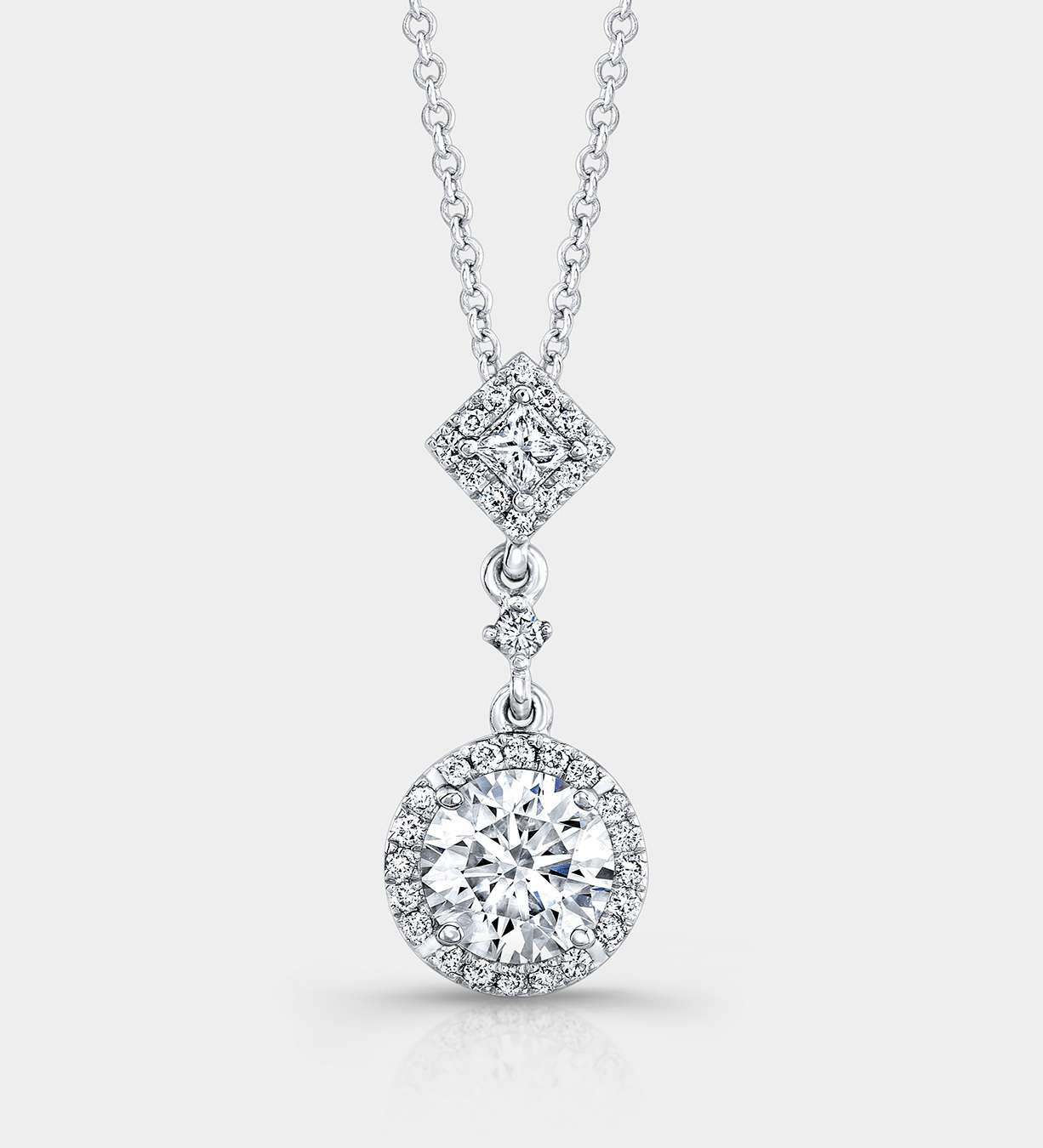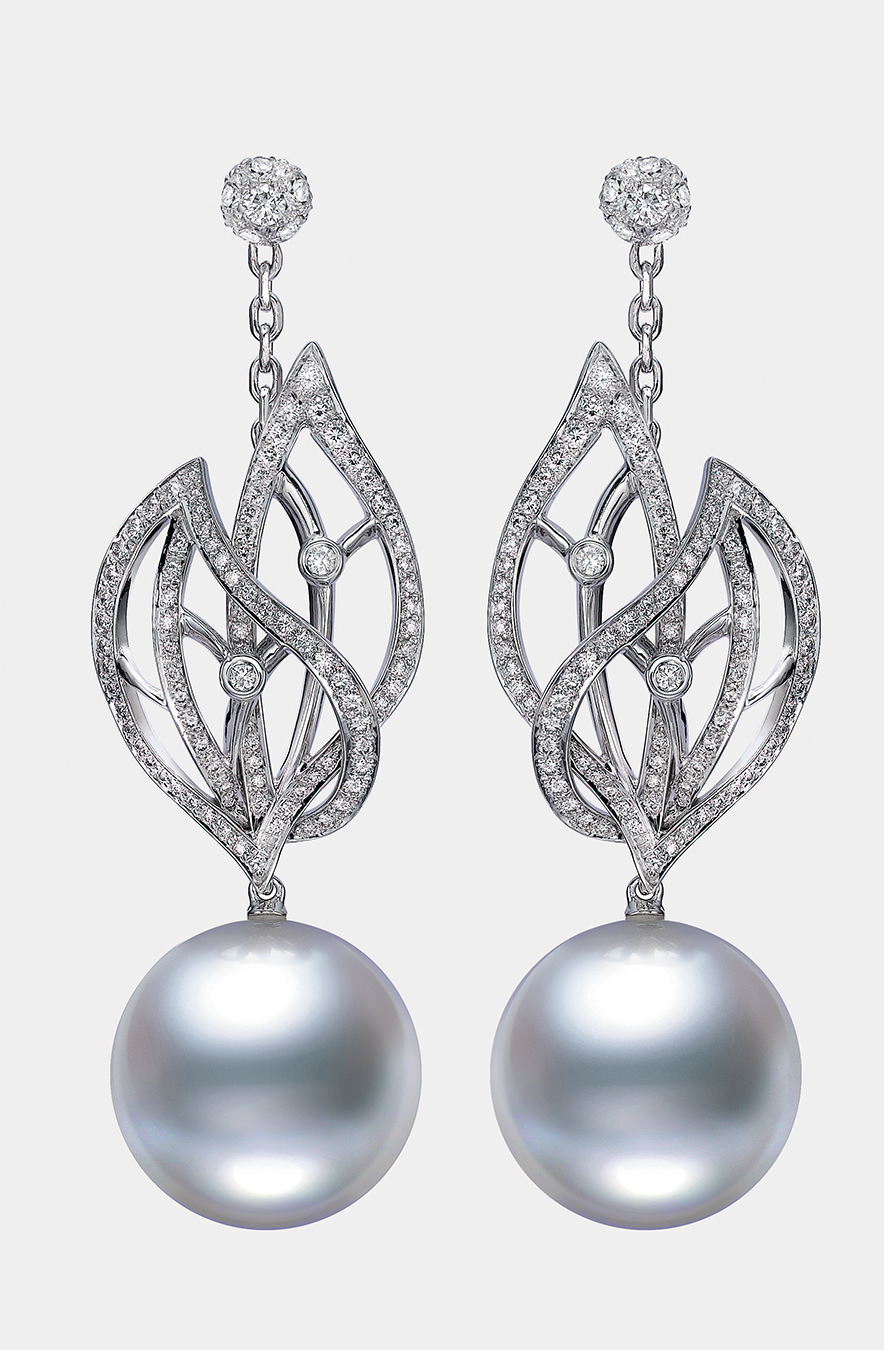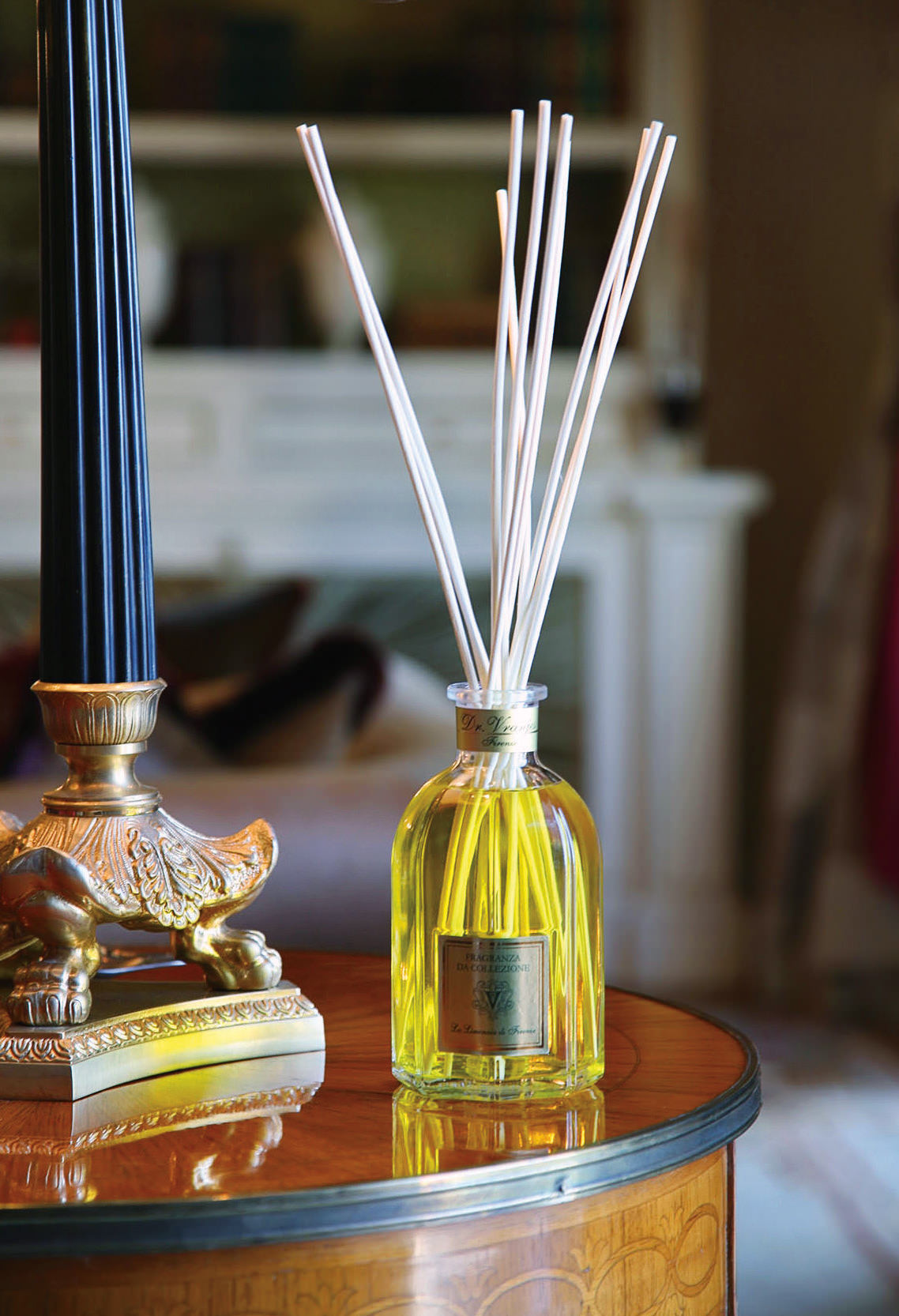-
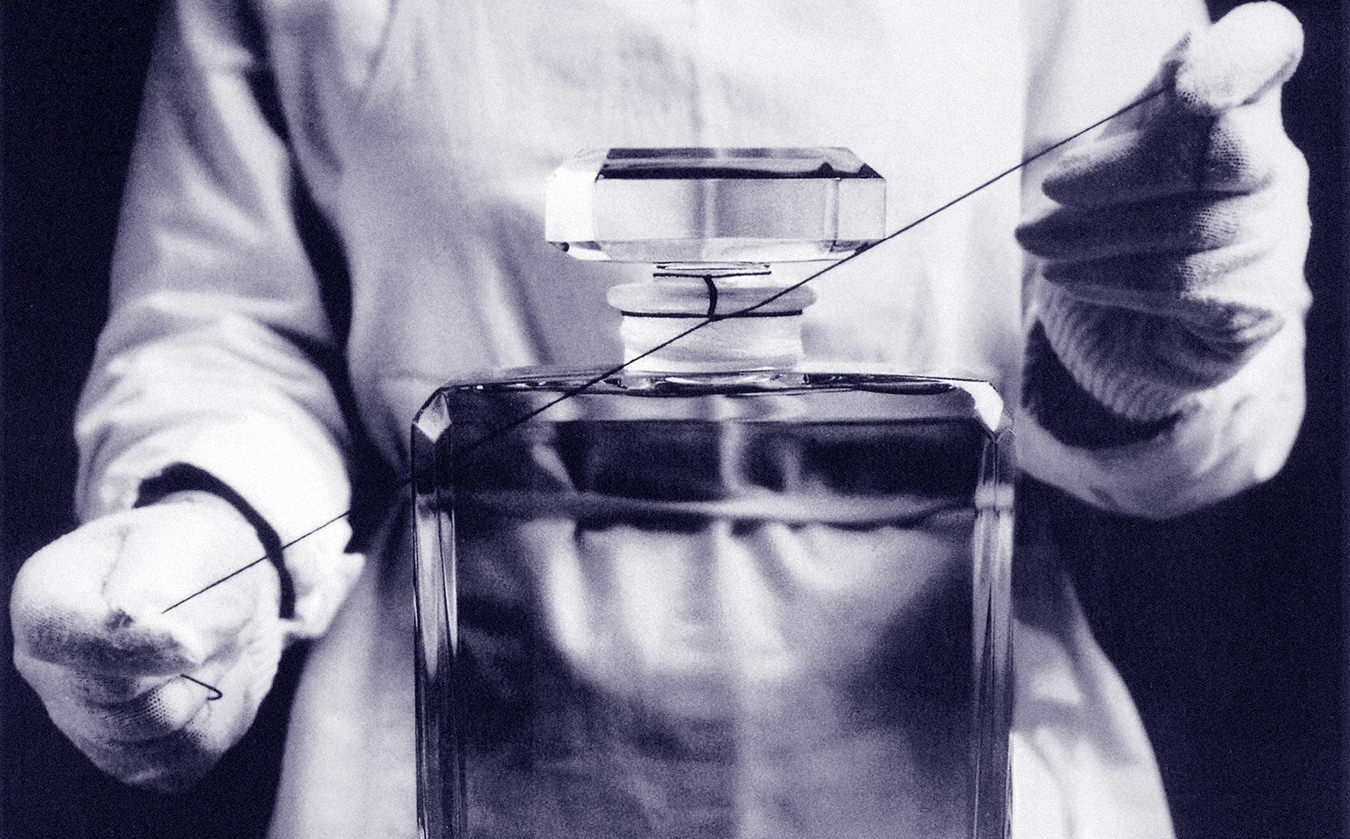
Photo by Laziz Hamani ©CHANEL.
-
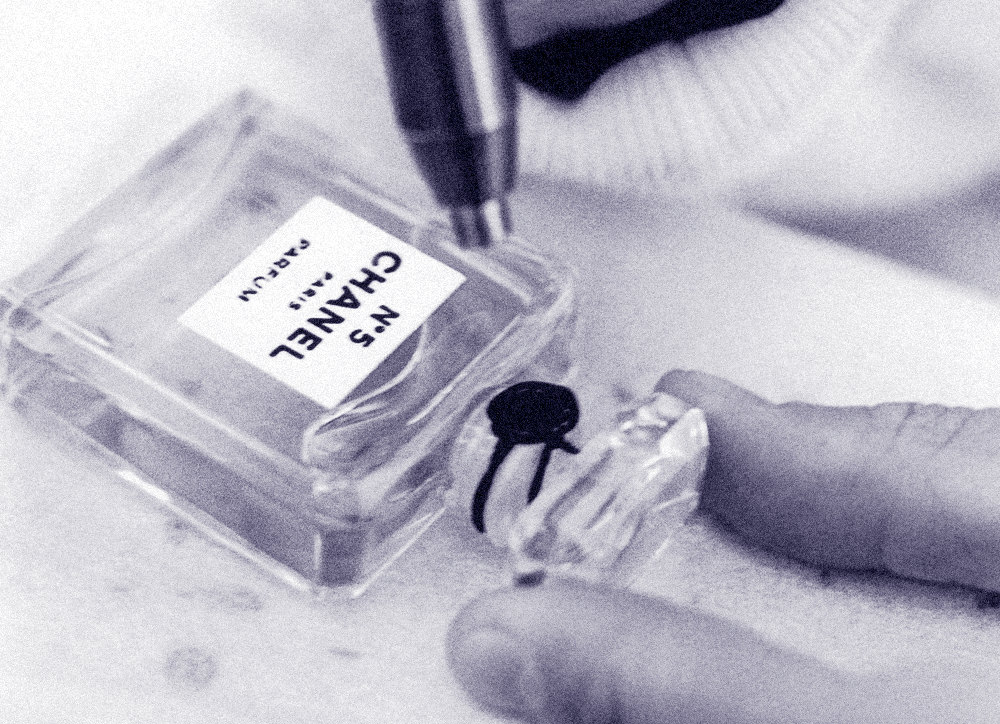
Photo by Louis Bourjac ©CHANEL.
-
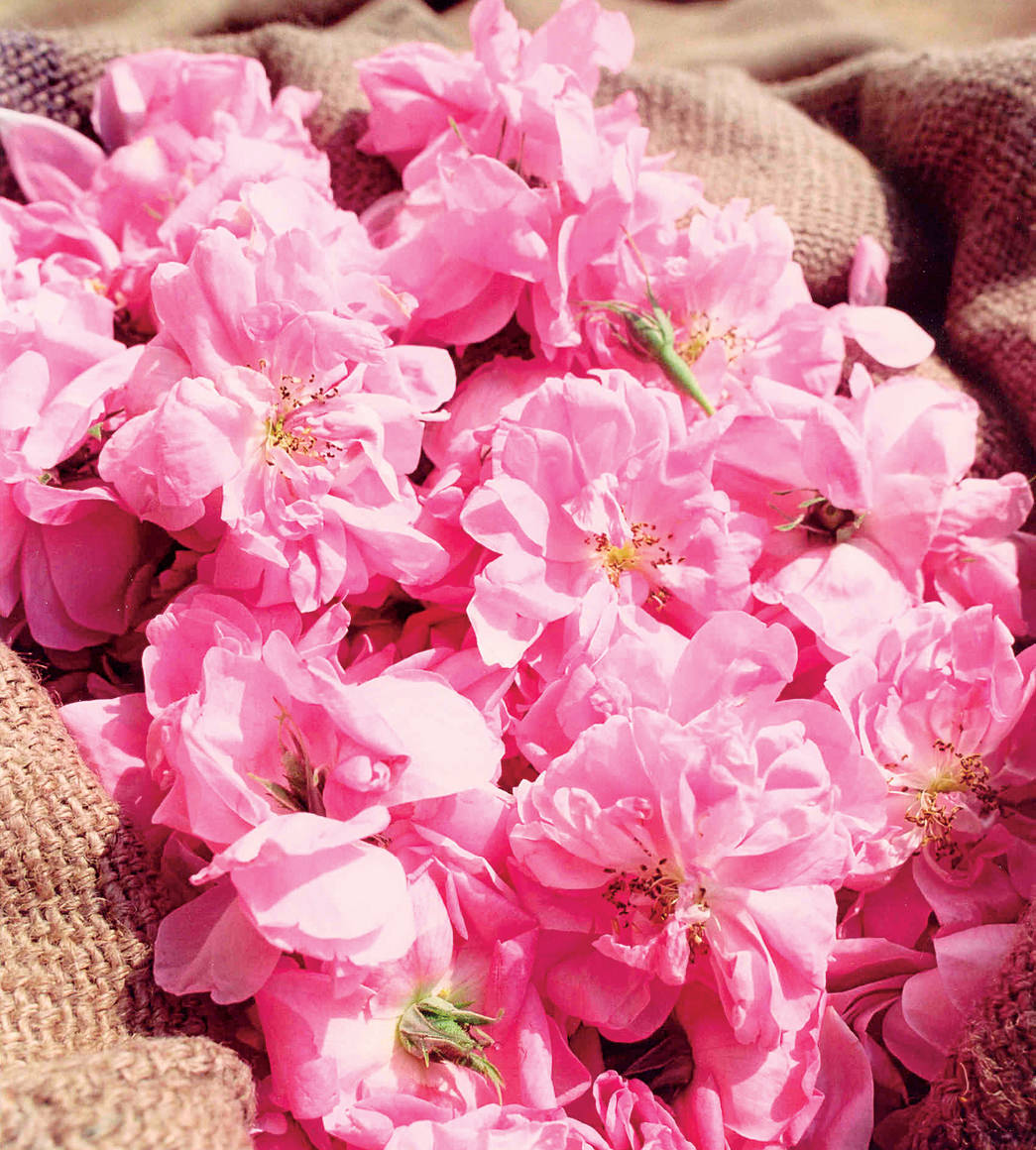
-
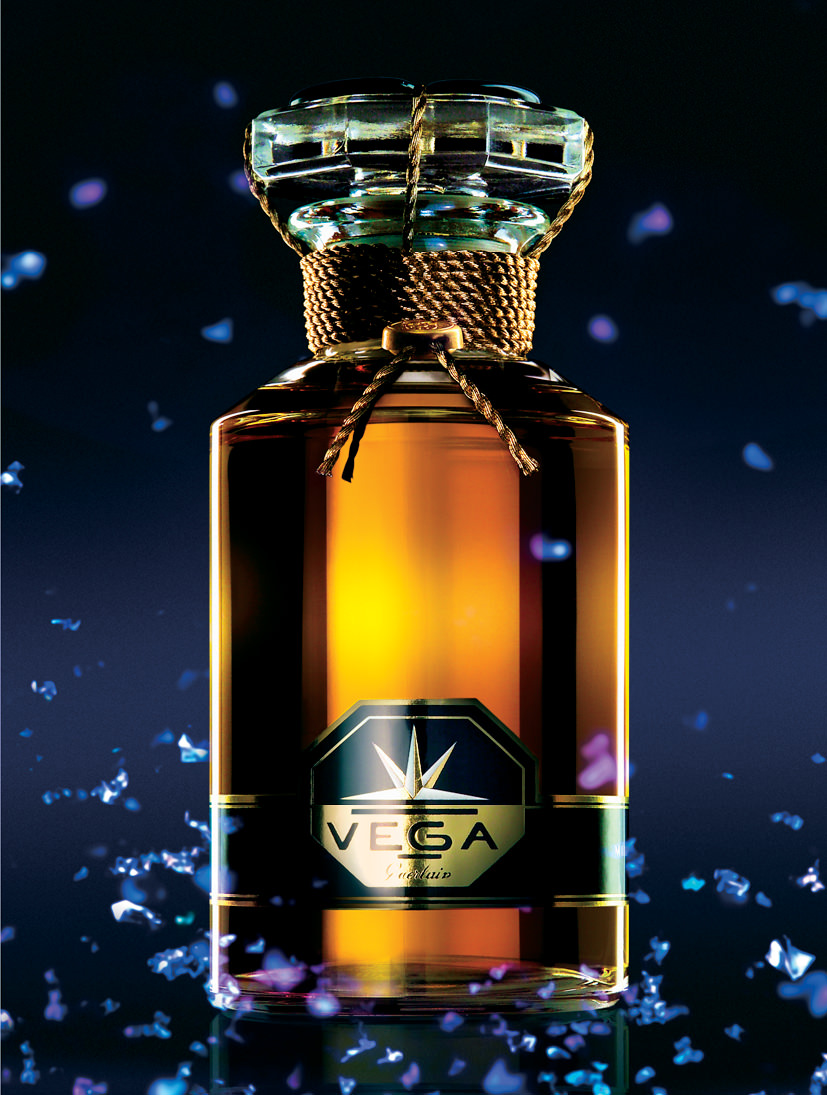
Photo courtesy of Guerlain.
-
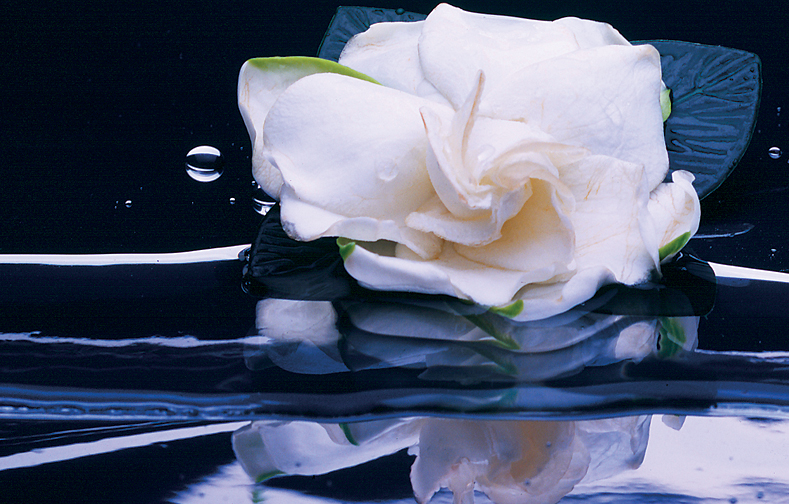
Photo courtesy of Guerlain.
Classic Fragrances
Scent's lost soul.
My nose was utterly underwhelmed by a lack of creative innovation. Current hot note, I noticed, was frosted pear. Miserable, I sought comfort in memories of my grandmother, a former 1920s flapper, who had insisted I appreciate beauty for beauty’s sake. To wit, she immersed me in Van Gogh, Picasso, and Chagall, and brought me to meet the widow Romola Nijinsky to learn about her fabled husband’s ballet legacy. In the 1950s, my grandmother’s vanity table boasted Christian Dior’s Diorissimo, Elizabeth Arden’s Blue Grass and Memoire Cherie. Sometimes, a Chanel perfume cropped up, or in springtime, the spicy freshness of L’Air du Temps, whose romantic zip was a morning scent for her. A nod to youth, and the budding muguet de bois in her garden. It was this Claudette-Colbert-cum-Auntie-Mame persona who regaled me with triumphant pleasure when Hermès introduced Calèche to the market. “Utterly divine!” was how she described it.
Perfume was an enigmatic declaration of womanhood, and no woman was complete without her distinctive scent. So, it was to this sophistication and sensuality I aspired while playing with bath pearls and body talcs before falling asleep on sheets fragrant with fleur d’oranger and neroli. In remembrance of those celebratory days, I realized we had slipped into the new millennium without so much as a bang or a whimper. Worse, we were in the throes of crass commercialism; a thousand perfumes easily come to market in a year and are withdrawn almost as quickly. How I wanted the retro movement to cause history to repeat itself by bringing back the great perfumes! We’ve lost so many because they are no longer marketed. Sweet young things have decided they don’t want to smell like “old ladies”, even though they plead olfactory ignorance of the renowned fragrances they eschew.
Most young women have never heard of the great compositions. They regard legendary Arpège, albeit reformulated, in giant box stores with the same dispassionate eye they bring to the no-name tea bags and terry-cloth towels surrounding it. And why is Arpège in down-market company, anyhow? It is this gaping disconnect that is disturbing. A desire for distance is true of every generation—I certainly didn’t want to wear Yardley’s English Lavender in the swinging 60s, but at least I knew what it smelled like. And, as I developed a perfume awareness, I hungered for the stories of their creation.
In considering the 20th century, each decade brought something reflective of the changing times. François Coty’s 1917 Chypre was so original and startling, it spawned an entire perfume classification still in use today. Classical chypre is a blend of neroli, bergamot, labdanum, jasmine, patchouli and oakmoss. Breaking with the Belle Époque’s flowery excess, Coco Chanel ushered in post-war modernity in 1921 with N°5, Ernest Beaux’s revolutionary blend of aldehydes and florals. It arrived in a sleek square bottle, a black-and-white label, and made history. The House of Guerlain, whose noble lineage dates back to a royal warrant from the Empress Eugénie in 1853, forged ahead with Shalimar, rich in opopanax and vanilla.
Lanvin introduced My Sin in 1925 and Arpège in 1927. And, as the decade closed, the stock market crashed and the Great Depression began. Designer Jean Patou scored his greatest perfume achievement with Joy, named by society doyenne Elsa Maxwell. It was an audacious laugh in the face of calamity and was billed as the costliest fragrance in the world because it used expensive absolus of pure jasmine and rose. No doubt, American ladies who lunched comforted themselves in Joy’s expansive clouds whilst their financially ruined husbands waved goodbye from art deco skyscraper ledges. Je Reviens by Worth, a trend-setting floral aldehyde, made its debut in 1932.
Mid century saw the emergence of stellar benchmarks. Nina Ricci’s L’Air du Temps, Edmond Roudnitska’s Femme for Marcel Rochas, Eau Fraîche, Diorama, Diorissimo, Eau Sauvage, and more for Christian Dior. Hermès, Givenchy, and other fashion luminaries followed suit in an age of refinement and haute sophistication. Each new entry was hailed for its originality, its high art in both composition and bottle design, and when the houses took great care, the fragrances remained. Trends didn’t direct the “noses”. The perfumers were still mostly in-house, free to design from inspiration, free to reap the rewards of the Grasse region. One breathed oriental notes, another might play with floral aldehydes or chypres.
“Anyone can make a nice smell. The trick is to create a fragrance that has soul.”
As revolution fomented in the 1960s, politesse and feminine mystique assumed a new sexual freedom. And yet, little emerged in the mid to late 1960s, as most of the baby boomers were either toying with drugstore brands like Jean Naté Splash, Muelhens 4711, and patchouli incense, or else they were still worshipping at the altar of greatness from French houses, which now included Yves Saint Laurent’s first fragrance, Y. A good example of the connection of boomer youth to past glory is expressed by author Ira Levin in Rosemary’s Baby. While the film version reflects its 1960s settings and Vidal Sassoon’s radical haircut, Rosemary Woodhouse (Mia Farrow) confesses to wearing Detchema, a Revillon fragrance from 1953.
Even when the Studio 54 “me” generation experimented with sex, drugs, and rock ’n’ roll in the 1970s, great perfumes, such as Yves Saint Laurent’s Rive Gauche and Opium, were still launching, with the expectation of longevity. Charlie, from Revlon, heralded the feminist movement with joie de vivre. What American pioneers like Elizabeth Arden, Helena Rubinstein, Richard Hudnut, and Estée Lauder had earlier achieved blossomed into full flower as Ralph Lauren stepped forward with Lauren for women and Polo for men. According to Annette Green, president emeritus of the Fragrance Foundation and founder of the FIFI awards, Ralph Lauren gave Americans a sense of heritage. This in turn paved the way for other designers like Calvin Klein to burst forth with new iconoclastic perfumes.
Landmark perfumes came through the excesses of the 1980s. Sexuality was still anyone’s game, and Klein’s Obsession, probably his finest perfume, spoke volumes. Cartier debuted masterpieces like Must and Panthère. Mass marketing was heating up, and then AIDS changed the way we viewed the art of seduction. Dior launched Poison. Soon after, the fragrance market split into different camps. Nature, family values, political correctness, and the emphasis on fragrance wardrobing directed our noses inward to cocoon. Instead of Obsession, Calvin Klein spoke of Eternity, for the family man and woman. Perfumes lost their trails. Fragrance turned dreamy, boringly quiet, and almost disappeared until the new gourmand craze charged through with Thierry Mugler’s chocolate-vanilla-caramel Angel.
The century finished with attempts at fragrance banning, charges of carcinogens, multiple chemical sensitivity. Art was lost, mass markets were found. Sheer, watery florals were yawningly available. Safe bets for a confused world. Gossip became the new sex. Celebrities assumed thrones and remain in North America as the purveyors of signature fragrances, with classical designers taking a back seat. Facing the new millennium was rough. Beauty for beauty’s sake seemed lost. W. Somerset Maugham said: “Beauty is an ecstasy; it is as simple as hunger. There is really nothing to be said about it. It is like the perfume of a rose: you can smell it and that is all.”
Fat chance of that, I thought last fall, until a trickle of hope arrived in the form of Lanvin’s reissue of Rumeur, reformulated but nevertheless echoing its 1930s roots.
And then, in quick succession, the noses of beauty descended from heaven in the form of Sylvaine Delacourte from Guerlain, and Jacques Polge from Chanel. They waved invitations to a dance. In the airy room of a midtown hotel, Ms. Delacourte strutted her stuff with wild exuberance as she unveiled not one or two, but 14 creations, some of which, like Liu, Sous Le Vent and Vega, were reissues of Jacques Guerlain’s early masterpieces. From her own ideas came a procession of strange and exotic interpretations of olfactory families. Rose Barbare, untamed, and insistent; Cuir Beluga, carnal, and powdery; Bois d’Arménie, a smoky hymn to amber and wood, Angélique Noire, a surprise of floral vanilla; and Iris Ganache, a blend of white chocolate and powdery notes.
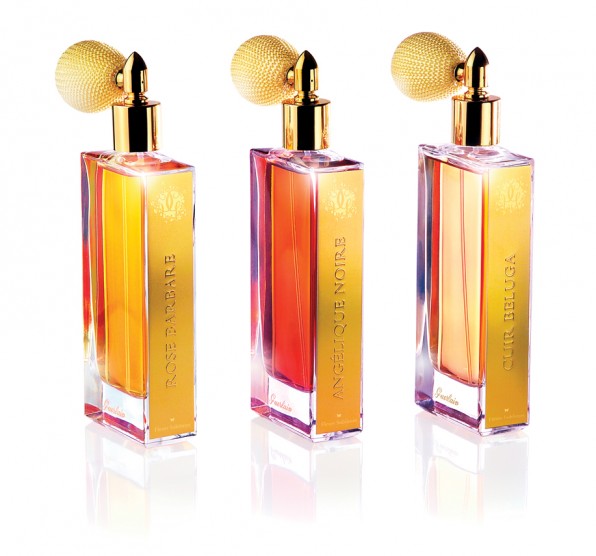
A dizzying accomplishment, unmistakably Guerlain in their depth, with rounded accords and musty drape. Yet they were as new as their 2007 launch dates. A week later I sat, like a giddy infant with a wobbly head, beside Anny Kazanjian, executive director of public relations for Chanel Canada, in a discreet but extravagant Beaux-Arts pied-à-terre in Old Montreal. She didn’t have to say a word, for in front of me on a low coffee table sat Les Exclusifs, also scheduled for release in 2007. Four of them were vintage: N°22, a floral tuberose from 1922; Gardénia, brighter than the 1925 original; Cuir de Russie from 1927, a blend of leather, blond tobacco, hay and woods; and Bois des Iles from 1926, the first woody fragrance for women, inspired by African influences.
To this, Polge had added six new compositions to complete the Chanel story. Eau de Cologne, a delightfully light, energizing citrus; 31 Rue Cambon, a sophisticated chypre, personifying the heartbeat of the Paris atelier; N°18, a playful ambrette dedicated to Chanel’s haute bijouterie on Place Vendôme; Coromandel, a deep and mutable oriental amber to match the lacquered screens of Coco’s apartment; Bel Respiro, dedicated to her country home outside Paris, airy, oceanic, and faintly green; and finally, 28 La Pausa, her Riviera home, echoing Florentine iris with powdery intoxication.
The beauty, simplicity and elusive elements of the collection redeemed my soul. But terrible thoughts plagued me. Was I bearing witness to last hurrahs? Were the new fragrances of the past two weeks closing the doors of greatness with a magnificent curtain call or opening them wider to receive the new century? I spoke to Christopher Sheldrake, the deputy nose for Chanel, who said my fears were groundless. “Jacques has been working on Les Exclusifs for 20 years! And he was getting frustrated. He waited a long time to bring his ideas forward. Yes, we are living in a world of fragrance wardrobing, and big brands have gone down-market and damaged their reputation. They’ve got to look after their image, relaunch. A lot of this is happening now. But at Chanel, nothing is created to fashion; rather, it is an expression of epoch. We try to express modernism of the time, yet remain timeless by concentrating on style of fragrance. It has to be finished, perfected, made with quality.”
I think he sensed lingering doubts in my silence. “Look at it this way,” he continued, “right now, celebrities are hot, and word of mouth makes those fragrances sell. But there is a shift happening, and it’s going to get better. This parallel world will continue for some time. Meanwhile, those who appreciate luxury and quality will seek better offerings, and those who don’t want it or understand it will not.”
Annette Green says fragrances are influenced by their times, and right now, fragrance has lost its original cachet. “Young women see the newest hot thing, buy it and forget it. There is an effort underway to bring fragrance back to its former glory. It’s the age of the power woman and a pivotal year for women in general. You’ll see, someone will come along and restore our faith in perfume art.”
The final thought belongs to the late Edmond Roudnitska, speaking about modern perfumes: “Anyone can make a nice smell. The trick is to create a fragrance that has soul.” Last summer’s discontent has become this summer’s hope.


